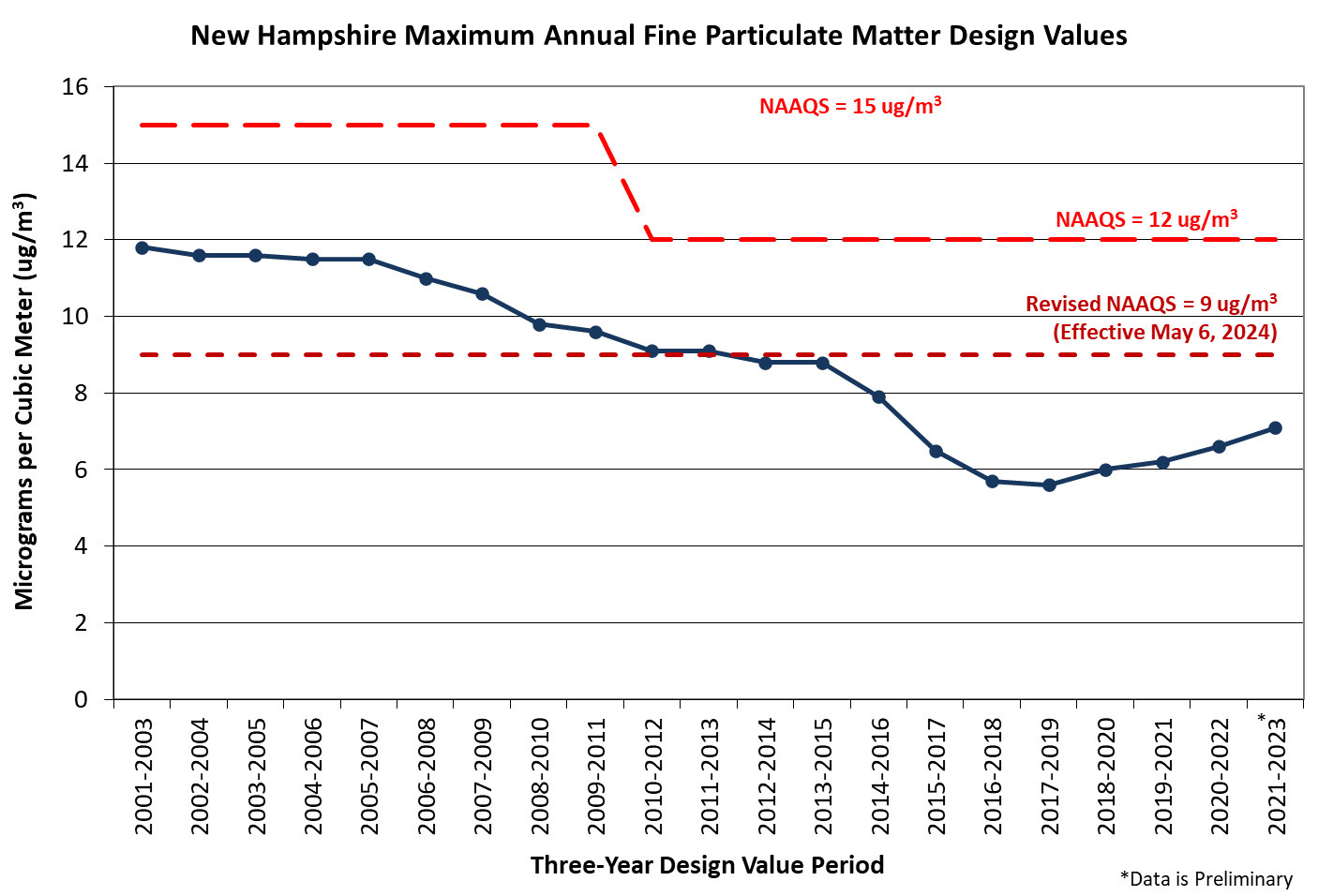
Particulate Matter National Ambient Air Quality Standards strengthened in 2024
On February 7, 2024, the EPA strengthened the primary annual fine particulate matter (particles 2.5 microns or less in diameter, or PM2.5) standard from 12.0 ug/m3 to 9.0 ug/m3 “to reflect new science on harms caused by particle pollution.” This change was made to protect public health, helping to prevent premature deaths and avoid asthma attacks, as well as strengthening the economy through avoided lost workdays.
Fine particulate matter (particles 2.5 microns or less in diameter, or PM2.5) is a pollutant that is so small that it can be deeply inhaled and therefore cause numerous negative health effects. In fact, particles of this size can even get into the bloodstream. Some of the health effects associated with PM2.5 can include nonfatal heart attacks, aggravated asthma and decreased lung function. Due to the seriousness of these health concerns, the EPA exercises its authority under the Clean Air Act and regulates PM2.5 (and of course, other air pollutants with serious public health and welfare concerns).
To this end, the EPA has established a set of ambient air quality standards called the National Ambient Air Quality Standards (commonly referred to as the NAAQS) for PM2.5 and the other regulated air pollutants. The standards for PM2.5 have been in place since 1997 and were last revised in 2012. The 2012 standards include a primary (health-based) standard of 35.0 micrograms per cubic meter (ug/m3) averaged over a 24-hour exposure period and a primary standard of 12.0 ug/m3 averaged over an annual exposure period. While the annual standard has changed in 2024, the 24-hour standard remains the same at 35 ug/m3.
The chart below shows New Hampshire’s maximum annual design values dating back to 2003. This is the metric that is compared to the NAAQS, and New Hampshire has met the standards even as they have changed over time. Based on preliminary data for 2023, New Hampshire meets both the old and the new standard. In addition to the revised annual standard, the EPA is revising the categories of the Air Quality Index (AQI), which is used to communicate what the air quality is. With this change, New Hampshire may see more “Moderate” days but the category for “Unhealthy for Sensitive Groups” is unchanged and is the category at which NHDES issues Air Quality Action Days. Therefore, we should not expect an increase in alerts, solely based on this change.

For more information about these changes, please read the Final Consideration, the Particulate Matter fact sheet, and the AQI fact sheet.




